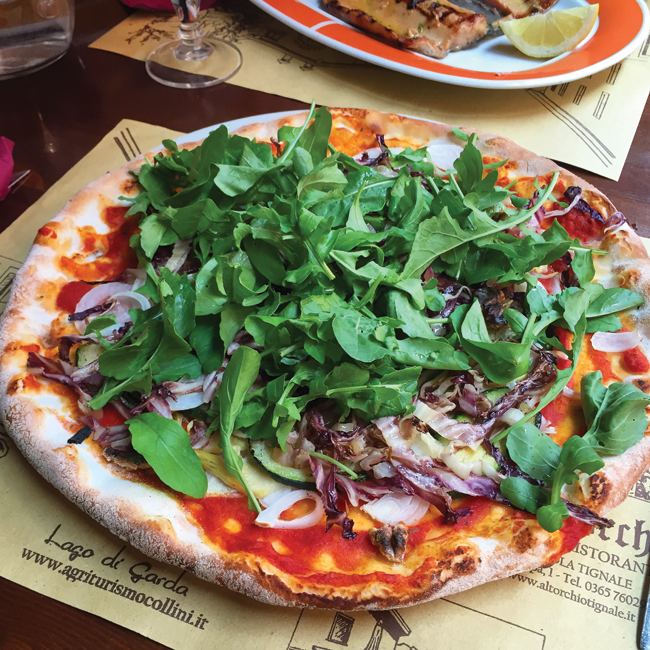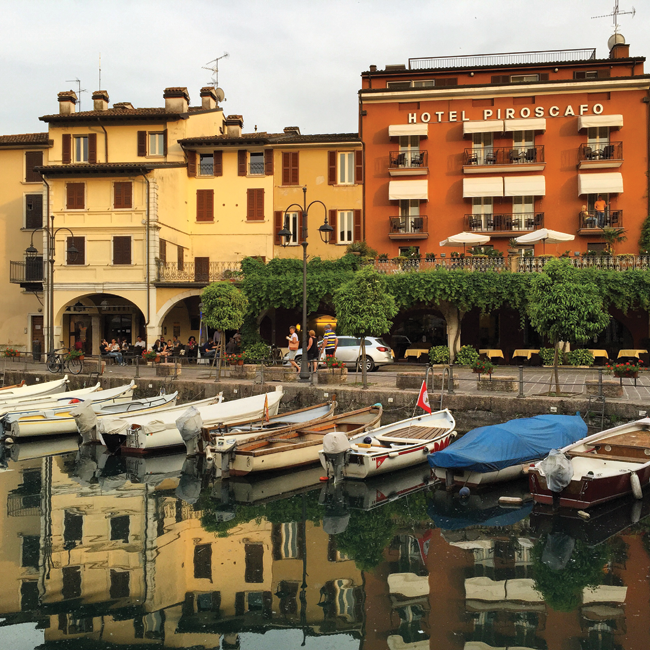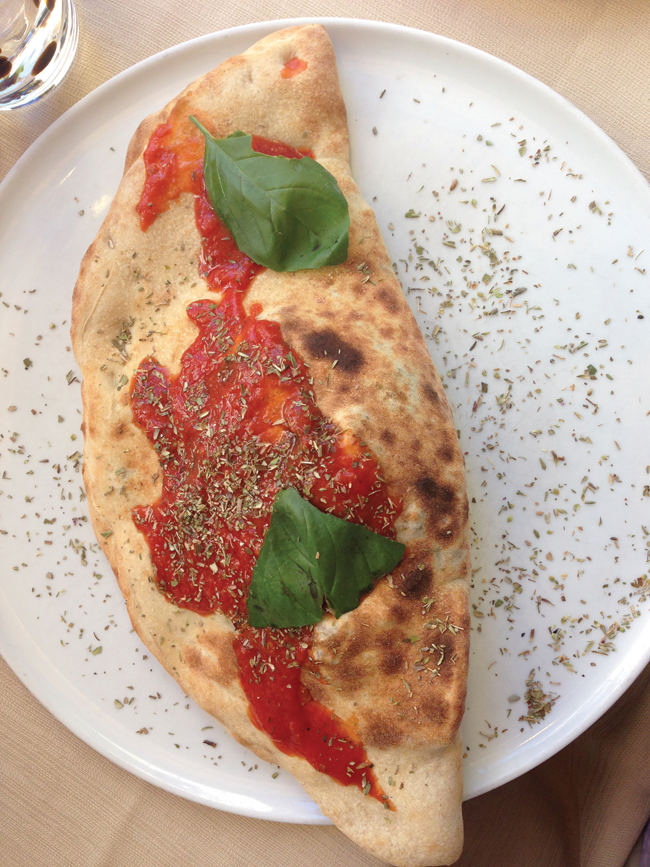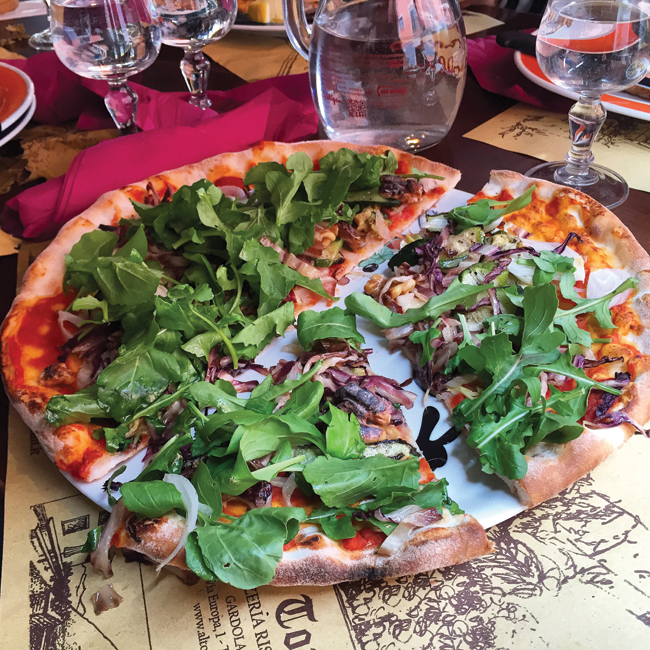You might imagine that finding food that’s gluten-free in Italy is almost impossible, as many of their dishes traditionally feature gluten-rich foods. But times are changing, as resident Italian chef Ambra Torelli found when she discovered just how far her country’s acceptance of coeliac disease has come in recent years…

In the homeland of pizza, pasta, biscotti and cannoli, one would assume that avoiding gluten has got to be one of the toughest challenges. Wrong. The truth is it’s quite the opposite. Maybe it’s because Italians are so protective over their gastronomic tradition, but to the eyes of a traveller, Italy appears to be a true gluten- free heaven!
When I am abroad, my attention is often captured by those restaurants that boldly publicise their ‘gluten-free menu’. My imagination goes wild; I start to visualise piping hot plates of pasta alla carbonara, maybe even an amazing gluten-free crostata. A first glimpse of the menu however brings me back to reality; a thin list of items, with mostly meat dishes and salads. And for dessert; a naked fruit platter. I’d rather eat at home – at least I can keep it exciting.
In Italy, forget about that. Gluten-free restaurants boast eclectic menus that go far beyond any coeliac’s wildest dreams; homemade stuffed tortellini, tiramisu, hand-rolled piadina and pizza crusts that taste exactly like the regular ones. And the list goes on.
In fact, the restaurants’ sensibility to gluten issues here in Italy is not just a trend you find in the big cities. It’s amazing to see that every small town has their way to treat the gluten-free eater: from the delicious homemade gluten-free croissants at Caffe Letterario in the picturesque Ravenna, to the mouthwatering gnocchi al ragù offered at Trattoria La Speranza, on the windy hills of Solferino, Mantua.

Thanks to the Italian Celiac Association (AIC), who for over 30 years has been engaged in raising awareness and inspiring laws for the protection of people with gluten related issues, Italy has loads of choices for eating out while avoiding gluten.
And in the last couple years, many pastry chefs, ice cream makers, bakers and pasta makers have opened gluten-free businesses with excellent results. When in Bologna for example, you can enjoy their most typical dish, lasagne Bolognese, in its homemade gluten-free version at Rosarose Bistrot. In Castelsardo, Sardinia, you can have yourself a plate of traditional Sardinian ravioli at Rocca Ja; while at Il Torchio, in Tignale on the Garda Lake, you can indulge in one of the best gluten-free pizzas I have ever eaten. It’s so identical to the traditional one that the first time I ate there, I sent my pizza back to the kitchen, convinced that they brought me a regular wheat crust!
And I mention one of my most recent discoveries; Quinoa, a full on gluten-free fusion eatery in Florence, where you can enjoy samosas and Thai style tagliatelle, or Glu Free, a forneria in Milan that offers an amazing array of freshly baked products, from panzerotti (small folded pizzas) to bignè (delicious puff pastries filled with custard).
Find these places at www ristorantiperceliaci.net and www.pizzerieperceliaci.net. These are helpful websites listing restaurants and pizzerias that comply with the AIC regulations and operate a separate gluten-free kitchen.
The AIC has compiled a database called ‘Project Eating Out’ that is constantly updated and connected to an app. You simply enter the city, specify what you are looking for, and it will provide you with a whole list of places where it’s safe for you to eat. The download is free: you need to register at www.celiachia.it/res/account/login.aspx and click on Registrati. If you don’t live in Italy, you can use AIC’s address: Caffaro 10, Genova, GE, 16124, Italy.
There are more than 3,800 eateries all over Italy that have joined the AIC gluten-free eating out programme, but this number is always increasing. In fact, since coeliac friendly restaurants are taking over the food scene, you’ll find much more than what’s listed on the database simply by asking. When you enter a restaurant, alert the staff about your issues with gluten (you can either say: ‘Sono celiaco’ – ‘I am coeliac’, or ‘Sono intollerante al glutine’ – ‘I am intolerant to gluten’). They’ll try to accommodate you the best they can, or point you to a nearby place where it is safe for you to dine.

All of the restaurants, pizzerias, bakeries and hotels that are allowed to brand themselves as gluten-free friendly have to follow the strict AIC training programme, and they are monitored at least once a year to ensure the non contamination of their food. Even in cases in which you find yourself in a non certified GF restaurant, speak to the manager. Since 90% of these businesses are family run and most of the food is prepared in the moment by scratch, they will most likely be able to put together a safe meal.
Italian law is one of the best in the world for the protection of people with coeliac disease: schools, hospitals, trains and cafeterias of government operated workplaces have to supply gluten-free options. The Italian Minister of Health has proven to be very sensitive on the gluten matter. In order to ensure the Italian people enjoy all of their country’s typical delicacies and consume a balanced diet, individuals with coeliac disease are entitled to more than 100 Euros a month towards certified gluten-free products.
Finding coeliac friendly products is quite simple: all of the largest supermarket chains (such as Coop, Conad, Crai, Esselunga, Carrefour and Ali) have a dedicated gluten-free aisle, and in most cases they have their own lines of gluten-free products that allow people to save a decent amount of money when purchasing pasta or biscotti.
Furthermore, there are specific organic markets called ‘negozio biologico’, that specialize in niche products and offer an amazing variety of gluten-free goods. These stores are scattered all over the country, from big cities to small towns, and they feature major brands as well as local manufacturers, who provide freshly baked bread and seasonal specials like panettone for Christmas and colomba for Easter.

And if you are wondering about one of Italy’s most renowned specialties, gelato, don’t worry. Almost every gelateria now offers gluten- and dairy-free cones so you can safely enjoy this amazing artisanal chilled dessert, now served in dairy-free flavours made with coconut, almond and soy milk.
As in many other areas of life, the curse of the locals is that they can’t fully see what they have in front of them. It wasn’t until I started travelling to other countries that I realized how good the gluten-free scene is in Italy.
The love for creativity and excellence that Italy is so proud of, led the gluten-free food scene to become one of the best in the world. Because of their high standards when it comes to quality, the gluten-free food culture here is simply better!
And you can bet a real pizzaiolo won’t stop trying until he creates the ‘perfect’ pizza crust. Settling for ‘pretty good’ is just not part of the culture.
For more information, visit www.littlebitesofbeauty.com
 About the author: Born and raised in Italy, Ambra Torelli grew up as a devoted lover of all things Italian. After an MA and a Phd in Italian Literature, she graduated from the Carpigiani Gelato University in Bologna, learning the secrets to making the world’s best gelato. You can find more of her delicious recipes on her blog, or you can get in touch with her on Facebook, Twitter or Instagram.
About the author: Born and raised in Italy, Ambra Torelli grew up as a devoted lover of all things Italian. After an MA and a Phd in Italian Literature, she graduated from the Carpigiani Gelato University in Bologna, learning the secrets to making the world’s best gelato. You can find more of her delicious recipes on her blog, or you can get in touch with her on Facebook, Twitter or Instagram.
